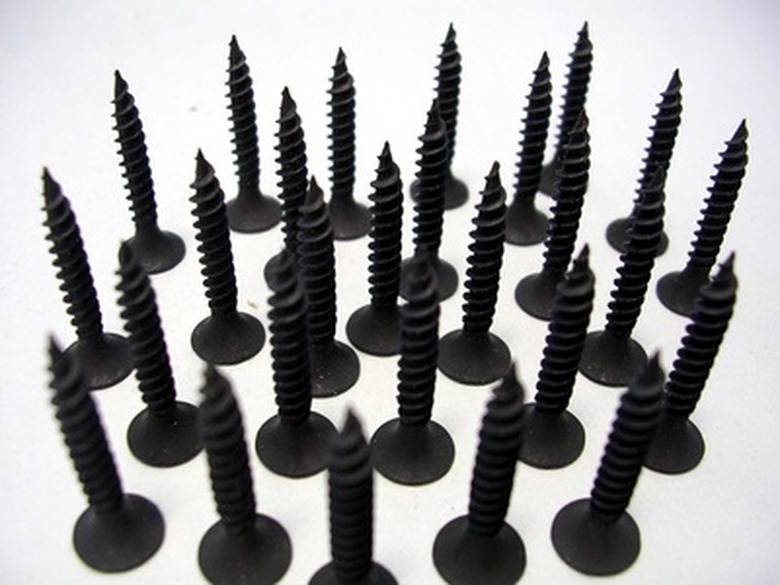Examples Of Simple Screw Machines
Simple machines can be divided into six basic categories: levers, wheel and axle assemblies, pulleys, inclined planes, wedges and screws. A screw is actually a special case of an inclined plane in which something is moved from a higher position to a lower position or conversely, but in a series of circles, thereby conserving horizontal space.
Screws, which convert linear motion to rotational motion, are commonly regarded as ways to hold things in place. They often fasten parts of complex machines to each other. This obscures the fact that screws are machines, or more accurately the primary component of certain machines in their own right. The worlds of plumbing, electricity, agriculture and other areas would be vastly different without simple screw machines.
Drills
Drills
Drills are perhaps the most recognizable simple screw machines, since the handheld variety are little more than over-sized screws turned by a hand crank. The screw portion of an auger, which is another name for a hand drill, is turned using a short series of gears that translate the applied force supplied by the person turning the handle across perpendicular planes. That is, the crank is usually a circle parallel to the axis of the screw for ease of use.
Drills are used to bore into materials as well as to turn other screws. The advent of electricity and modern motors has permitted the construction of very powerful drills, some of which feature diamond tips than can drill into steel or hard rock that is generally impenetrable using traditional methods.
Faucets
Faucets
Faucets are typically regarded not as machines but in terms of their main purpose, which is to supply water or some other fluid. But faucets are another type of simple screw machine, with the screw component usually concealed within a pipe or other portion of the faucet housing. Water on the supply side of the faucet is at a higher pressure than the tap side, normally owing to gravity but sometimes thanks to a pump. When the handle of the faucet is turned, the wedge-shaped screw between the fluid and the external environment moves in the direction of lower pressure. The rate of fluid dispensation can be controlled by turning the faucet lever farther from its closed position, which in turn widens the aperture through which the fluid leaves its reservoir.
Jacks
Jacks
Some heavy-duty jacks are operated hydraulically, but a traditional automobile jack makes use of a screw to elevate the portion of the car that needs to be lifted so that the tire can be changed.
A car jack, which makes use of a lever, is an example of the many everyday human tools that combine types of simple machines. The lever of a jack allows the force applied to one end to be greatly multiplied at the other end, and this is what permits a person weighing perhaps 100 to 150 pounds to apply sufficient force to turn the jack screw sufficiently to raise the lifted object high enough to address the problem at hand, though it may require a high number of turning cycles to get the job done.
The Ancient Water Screw
The Ancient Water Screw
The Greek scientists Archimedes was long credited with creating a device that functioned as a sort of pump in the 11th century, using a screw inside a pipe to bring water from a lower vertical position to a higher one against the force of gravity. Then, in the 1920s, scholars determined that the Babylonian people of ancient Mesopotamia had their own water screw some four centuries earlier. Today, thanks to an even more recent discovery, the invention of the water-raising screw in the Hanging Garden of Babylon is no longer being popularly attributed to the Babylonians but to the Assyrians, their rivals. In modern terms, this is not unlike learning that, say, the Germans, not the Russians, were the first to launch an artificial satellite into orbit.
References
Cite This Article
MLA
Beck, Kevin. "Examples Of Simple Screw Machines" sciencing.com, https://www.sciencing.com/examples-simple-screw-machines-6899352/. 20 April 2018.
APA
Beck, Kevin. (2018, April 20). Examples Of Simple Screw Machines. sciencing.com. Retrieved from https://www.sciencing.com/examples-simple-screw-machines-6899352/
Chicago
Beck, Kevin. Examples Of Simple Screw Machines last modified March 24, 2022. https://www.sciencing.com/examples-simple-screw-machines-6899352/
